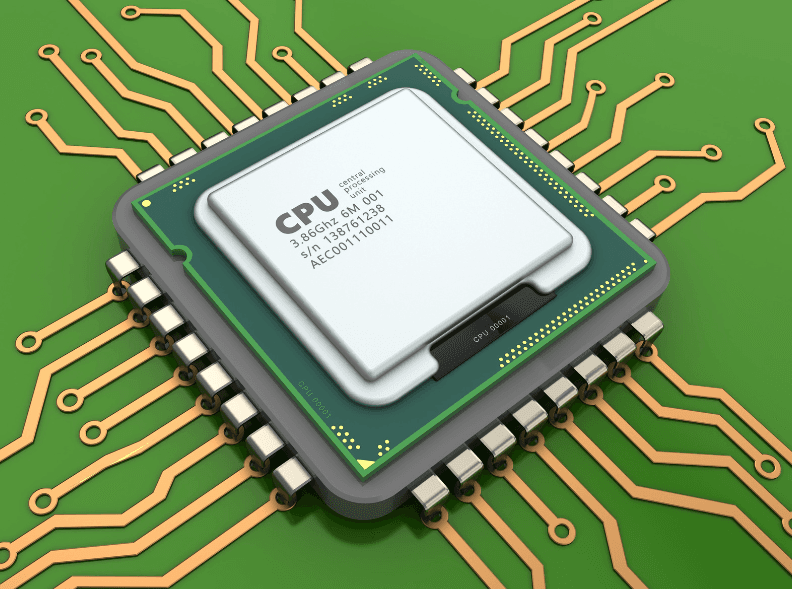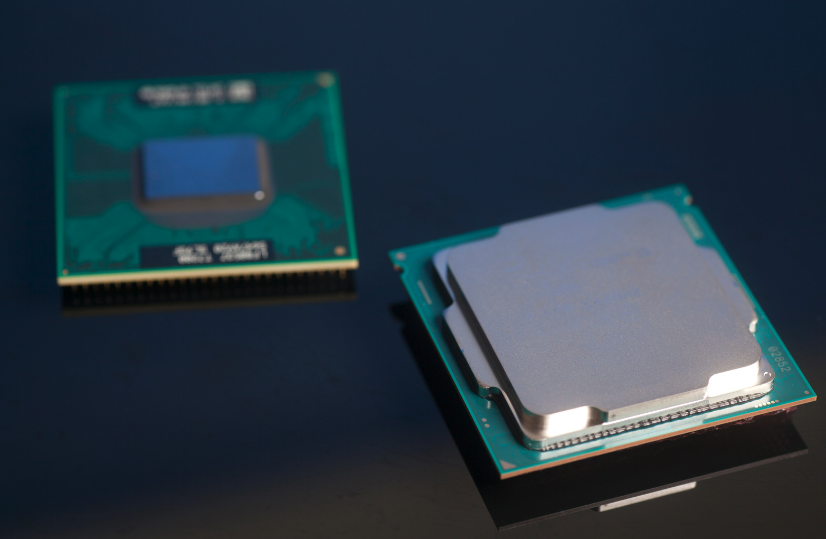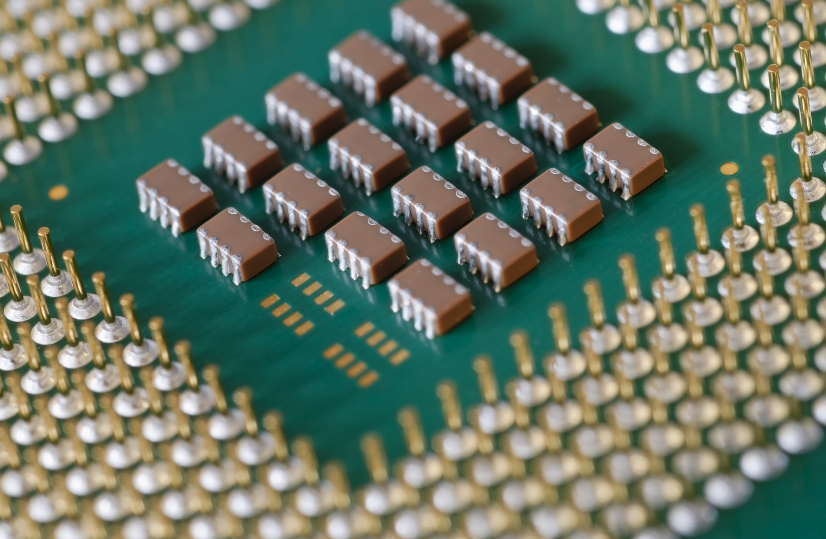CPU Power Dissipation

More from the Category
As processing demands escalate in industries from data centers to consumer electronics, managing CPU power dissipation has become a critical challenge in electronic component design. Power dissipation refers to the energy that is inevitably lost as heat when a CPU operates, due to resistance and switching activities in the transistors that drive computational tasks. This lost energy, if unmanaged, leads to overheating, reduced performance, and shorter component lifespans.
CPU designers and engineers are focused on reducing power dissipation through design and efficient thermal management techniques. Yet, as CPU architectures advance, so do the complexities of controlling power output. Increasing clock speeds, denser transistor layouts, and more intensive workloads all push the limits of what traditional cooling methods and design optimizations can handle.
In this article, we’ll dive into the mechanisms of CPU power dissipation, explore the key formulas engineers use to measure it, and examine the innovative strategies used to mitigate it. By understanding the intricacies of CPU power management, industry professionals can gain insights into creating more efficient, durable, and high-performance CPUs.
What is Power Dissipation?
Power dissipation in CPUs refers to the process where electrical energy is converted into heat due to resistance in electronic circuits. This phenomenon directly impacts a CPU's performance and durability, as the generated heat must be managed to prevent overheating and ensure smooth operation.
Efficient power dissipation is crucial for optimal CPU functionality. Heat generated from power dissipation, if unmanaged, can degrade the processor’s efficiency, cause thermal throttling, or even reduce its lifespan. To manage this heat, engineers rely on thermal management solutions, like cooling systems and efficient circuit design, to maintain safe operational temperatures.
Types of Power Dissipation in CPUs

In CPU design, power dissipation falls primarily into two categories: static and dynamic. Each type has distinct causes and implications for performance, efficiency, and heat management in processors.
Static Power Dissipation
Static power dissipation occurs even when a CPU is idle or not actively processing data. This type of dissipation arises from leakage currents within the transistors, specifically due to imperfections in insulating materials and sub-threshold conduction. As transistors become smaller with advanced manufacturing techniques, controlling these leakage currents has become increasingly challenging. Static power dissipation is most influenced by the physical properties of the transistor, such as material choice and transistor architecture.
In high-performance CPUs, minimizing static power dissipation is crucial for reducing standby power consumption and extending battery life in portable devices. Techniques like improved insulating materials and advanced transistor designs, such as FinFETs, help to reduce these leakage currents and, consequently, static power dissipation.
Dynamic Power Dissipation
Dynamic power dissipation occurs when the CPU is actively processing tasks and is caused by the constant switching of transistors. Each time a transistor switches between on and off states, it draws current to charge and discharge capacitances. This process generates heat due to the power consumed in charging these capacitive loads and is directly proportional to the CPU’s clock frequency and supply voltage. So, higher operational speeds and voltages lead to increased power consumption and heat.
The dynamic power dissipation formula — often expressed as P=CV²f - illustrates how capacitance (C), voltage (V), and frequency (f) interact to produce heat. Reducing the clock speed or voltage supply can help lower dynamic dissipation, but this can also impact CPU performance. Balancing dynamic power dissipation is therefore key in designing energy-efficient CPUs that meet high-performance demands.
Calculating CPU Power Dissipation
Understanding and calculating CPU power dissipation is essential for designing processors that balance high performance with efficient energy usage. As stated previously, the most commonly used calculation involves the dynamic power dissipation formula:
P=CV²f
Where:
● P is the power dissipated,
● C represents the capacitance of the transistor’s switching elements,
● V is the supply voltage, and
● f is the frequency of operation.
Breaking Down the Components of the Formula
Capacitance (C): The capacitance depends on the transistor design and the materials used in the CPU’s construction. Higher capacitance means more energy is required to switch the transistor states, which increases dynamic power dissipation. Engineers often minimize capacitance in the design phase to keep energy demands low.
Supply Voltage (V): Voltage has a squared relationship with power dissipation, so even slight reductions in voltage can lead to substantial decreases in power consumption. Techniques like dynamic voltage scaling allow CPUs to adjust voltage levels according to the workload to optimize power usage.
Frequency (f): The frequency determines how quickly the CPU processes data, and higher frequencies require more power and produce more heat. Clock frequency scaling allows the CPU to adjust its frequency dynamically to reduce power dissipation when maximum performance is not needed.
Static Power Dissipation Calculation
While dynamic power dissipation is calculated using the formula above, static power dissipation calculations focus on leakage currents. Although there is no single formula for static dissipation, it can be estimated by measuring leakage currents at various operating temperatures and voltages. This type of dissipation is especially challenging to minimize, as it is affected by materials, transistor structure, and temperature.
Total Power Dissipation
In practice, total CPU power dissipation is the sum of dynamic and static power. Engineers strive to reduce both components by optimizing design parameters, using advanced materials, and implementing power management techniques such as dynamic voltage and frequency scaling (DVFS). Accurate calculations are essential for designing energy-efficient CPUs capable of meeting performance and reliability standards.
Understanding these calculations enables designers to make informed decisions and strike a balance between power efficiency and processing power.
Impact of CPU Power Dissipation on Performance and Lifespan
Power dissipation has a direct and substantial impact on both CPU performance and lifespan. As power is converted to heat, the resulting temperature increase within the CPU can lead to performance issues and long-term wear.
Performance Degradation
When power dissipation causes a CPU’s temperature to rise, processors may engage thermal throttling to prevent overheating. Thermal throttling reduces the CPU’s clock speed and power consumption to keep temperatures within safe limits. While this protects the hardware, it can significantly decrease performance. For applications requiring consistent high-speed performance, such as in data centers and edge computing devices, thermal throttling can be a critical bottleneck.
Furthermore, the higher the power dissipation, the more cooling power and infrastructure are required, which increases operational costs, particularly in large-scale systems. Efficient power dissipation management is essential to maintain optimal performance without excessive reliance on cooling systems.
Long-Term Effects on CPU Lifespan
Excessive heat generated by power dissipation doesn’t just impact short-term performance; it also affects the CPU’s lifespan. Prolonged exposure to high temperatures accelerates wear and causes electromigration — a phenomenon where the material in the CPU’s interconnects slowly degrades under the stress of heat and electrical current. Over time, this degradation can lead to failures in the CPU’s circuitry, increased risk of malfunction, and complete hardware failure.
In addition, high power dissipation can contribute to thermal cycling, where repeated heating and cooling cycles stress the CPU materials, leading to fatigue and eventual breakdown. Thermal cycling is especially problematic for processors in devices that frequently switch between high-performance and idle states, as these transitions create more pronounced temperature fluctuations.
Balancing Power Dissipation and Reliability
To extend a CPU’s operational life and maintain its reliability, engineers aim to keep power dissipation within manageable levels. Techniques like dynamic voltage and frequency scaling (DVFS), efficient cooling solutions, and advanced semiconductor materials help mitigate the adverse effects of power dissipation. Balancing these factors is crucial for ensuring that CPUs can deliver consistent performance over their intended lifespan without risking premature degradation or failure.
Techniques to Reduce Power Dissipation in CPUs

Engineers employ a range of strategies to reduce power dissipation, from adjusting clock speeds to innovating at the materials level, to balance performance with energy efficiency. Here are some of the most effective techniques:
Dynamic Voltage and Frequency Scaling (DVFS)
DVFS is a widely used method where the CPU adjusts its voltage and frequency dynamically, depending on workload requirements. During less demanding tasks, the CPU lowers its clock speed and voltage without impacting the user experience. For more demanding applications, it scales back up to deliver the required performance. This approach is particularly effective in mobile and low-power devices, where battery life is a priority.
Power Gating
Power gating involves selectively shutting off power to parts of the CPU that are not in use to reduce static power dissipation caused by leakage currents. Unlike DVFS, which adjusts frequency and voltage, power gating cuts off power entirely to inactive circuits. By limiting power only to the active parts of the chip, power gating minimizes wasted energy and lowers temperatures.
Clock Gating
Clock gating controls the distribution of the clock signal within the CPU. This technique disables the clock signal to parts of the CPU not required for a given task to stop unnecessary transistor switching — since switching transistors is a primary source of dynamic power dissipation.
Advanced Semiconductor Materials and Transistor Designs
As semiconductor fabrication technology advances, new materials and transistor architectures are being developed to reduce power dissipation. FinFET (Fin Field-Effect Transistor) technology, for example, improves on traditional planar transistors by enhancing control over current flow to effectively reduce leakage currents and static power dissipation. Materials like silicon-germanium (SiGe) and gallium nitride (GaN) are also being explored for their ability to operate at lower voltages.
Thermal Management Solutions
Efficient cooling solutions — such as advanced heat sinks, thermal interface materials, and even liquid cooling systems — help dissipate heat. While these techniques don’t reduce power dissipation directly, they prevent excessive heat buildup. Effective thermal management is essential in data centers and high-performance systems, where CPUs operate under continuous, high-load conditions.
Low-Power States and Sleep Modes
Modern CPUs incorporate various low-power states, often referred to as C-states (sleep states), to conserve energy when the processor is idle. When the CPU detects inactivity, it transitions to a low-power state where certain parts of the processor are turned off or set to minimal power consumption. These states are particularly useful in mobile devices and laptops.
Reducing Operating Voltage (Undervolting)
Reducing the CPU’s operating voltage — known as undervolting — is an effective way to reduce power dissipation without impacting stability. Since power dissipation is proportional to the square of the voltage, even slight reductions can yield significant savings in power consumption. However, undervolting requires careful calibration to avoid system instability or performance issues.
Emerging Cooling Techniques: Phase Change Materials and Liquid Metal
Advanced cooling technologies, such as phase-change cooling and liquid metal thermal interfaces, are emerging as effective methods to manage heat. Phase-change materials (PCMs) absorb and release large amounts of heat during transitions between solid and liquid states, while liquid metal has superior thermal conductivity compared to traditional pastes.
Building Computing Systems With Power Dissipation in Mind
As processors handle increasingly complex workloads, the challenge of controlling heat and energy consumption grows. And the importance of building computing systems that reduce power dissipation isn’t just about energy savings — it extends hardware life and enhances reliability, particularly in high-performance or continuous-use environments. Innovations in semiconductor materials, efficient software algorithms, and cutting-edge cooling technologies all contribute to optimized power use, setting the stage for future advancements.
When designing and constructing your next electronics system optimized for thermal management, look to Microchip USA to be your partner for sourcing the components you need. Our team of industry experts are the best in the business when it comes to supplying even the most difficult-to-find parts, and we can source any component — from memory modules to microprocessors and FPGAs — so contact us today!









